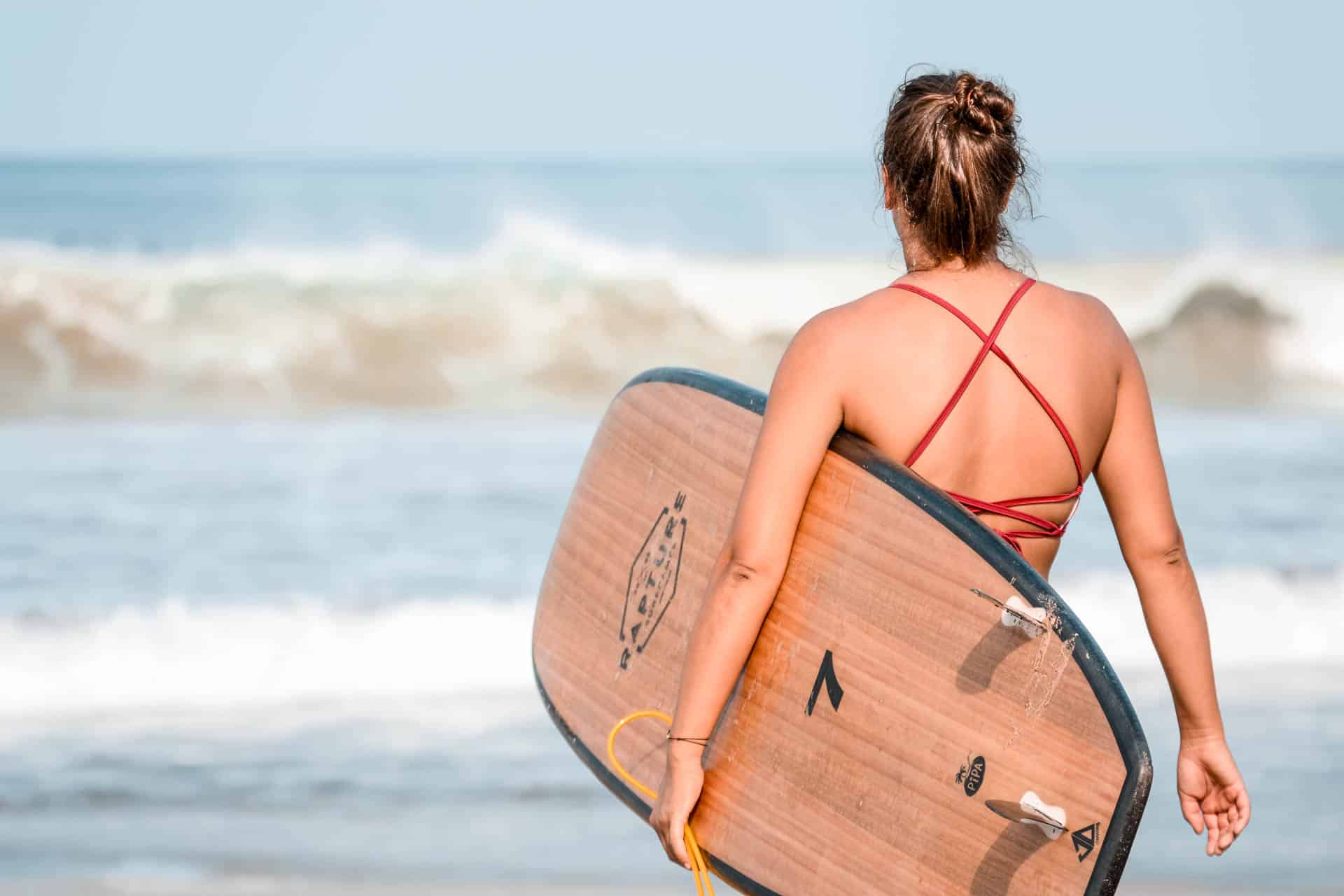To speak like a surfer, you need to know the surfing terms. So here are 34 surf terminologies to help you fit right in at the beach next time you go for a wave. Oh and in case you were wondering, “Cowabunga” isn’t on the list.
Every sport has its own nuanced vocabulary. But surfing really is in a league of its own. To an outsider, surf lingo can seem like an entirely different language. And if you’ve ever overheard two seasoned surfers chat about a swell forecast, you’ll know exactly what we’re talking about.
But speaking like a surfer is easier than you think. You don’t even have to be a wave riding veteran. All it takes is a quick glance at the list below to grasp the basics of surfing terms. From there you’ll finally be able to understand what competitors are saying in those WSL post-heat interviews. Instead of just sitting there and nodding your head. As if you’re fully aware as to what a bomb set breaking on a shelf at dead low actually means.
1. Wipeout
The act of falling from your board when riding a wave is called a wipeout. Beginners who want to speak like a surfer will become very well acquainted with using this word.
2. Leggie
A leggie aka legrope or lease is the cord that connects your ankle to the tail of surfboard so it isn’t washed away when you wipe out. With thicker ones for big waves and thinner ones for small waves, these are made of lightweight urethane and available in varying sizes.
3. Pocket
The area of the wave that’s closest to the curl or whitewash is what surfers call a pocket. This is where you should surf if you want to generate the most speed. Another related surfing term is the energy zone, it is the steepest part of a wave.
4. Thruster

This surfing term refers to three-finned surfboard originally invented back in 1980 by Australian surfer Simon Anderson. It is nowadays the most popular fin design for modern surfboards.
5. Kook
This surfing term does not refer to any technique or surfing paraphernalia. A kook is any surfer who endangers or impedes other surfers. They are generally clueless with little understanding of surf etiquette and are not necessarily beginners. Even experienced surfers may also display kookism.
6. Cutback
Anyone who wants to speak like a surfer should know that a cutback is a surfing maneuver. Performed by carving on the open face and bringing the surfboard back around in an arcing motion. To the point that you then rebound off the whitewash. Since a cutback can be performed on the flattest part of a wave, it’s considered to be one of the first moves beginners and intermediates will learn.
7. Punt/Aerial
The act of propelling your board above the lip and taking to the air is called a punt or aerial. An experienced maneuver that should only be attempted by the very best surfers, it requires lots of speed and a decent ramp from which to launch off.
8. Onshore/Offshore

This surfing term refers to the direction that the wind is blowing and whether it is favorable for a specific break. Onshore winds blow from the ocean towards the land, which crumbles the lip and creates ribbing on a wave. Offshore winds blow from the land out to sea, grooming the waves and making them easier to ride.
9. Ramp
The point of ejection for a surfer attempting a punt/aerial is called a ramp. More often than not, the ramp will be the lip of a wave or an oncoming section.
Planning a Surf Trip? Think Rapture Surfcamps!
10. Going over the falls
This surfing term is used to describe being sucked over with a breaking wave after pulling back on the takeoff or a failed duckdive. While it may look very funny to the onlooker, it is not so funny when it happens to you.
11. Duckdive
A duckdive is a technique by which you submerge your board under the water so as to dive underneath an approaching wave. Named after the way ducks dive beneath the water when fishing, it is a key surfing term if you want to speak like a surfer.
12. Reformer
When a wave breaks out the back only for the whitewash to recede before it breaks again, it is called a reformer. A reformer is an excellent wave for beginners on longboards, given that it has less power and breaks close to shore.
13. The back
The back is the area past the breaking waves where the lineup is situated. This is where you will surf once you learn how to successfully navigate the shorey and duckdive.
14. Shorey

Waves that break on the shore is called a shorey. Often they dump hard on the sand and can prove challenging to get past. Another popular synonym for this wave break is shorebreak.
15. Lineup
The area out the back where the waves are breaking is what surfers call a lineup. This is the place most surfers will sit to ensure they’re in the best position for when a set arrives. Also known as the takeoff zone.

16. Set
Set waves are large waves that come in groups of two or more. They are generally the most highly sought after waves in any swell. This is because they offer more power and longer rides. Speaking like a surfer will involve talking about set waves.
17. Twinny
This is the colloquial term for a twin-fin surfboard. First implemented back in the 1940s, however, it wasn’t until decades later that Californians began to refine its design. Eventually it was phased out as the thruster became more popular. Now it is seen as a novelty fin setup as opposed to a performance one.
18. Barrelling wave
A barelling wave occurs hen the lip of a wave throws over to form a hollow cylinder.
19. Getting barrelled
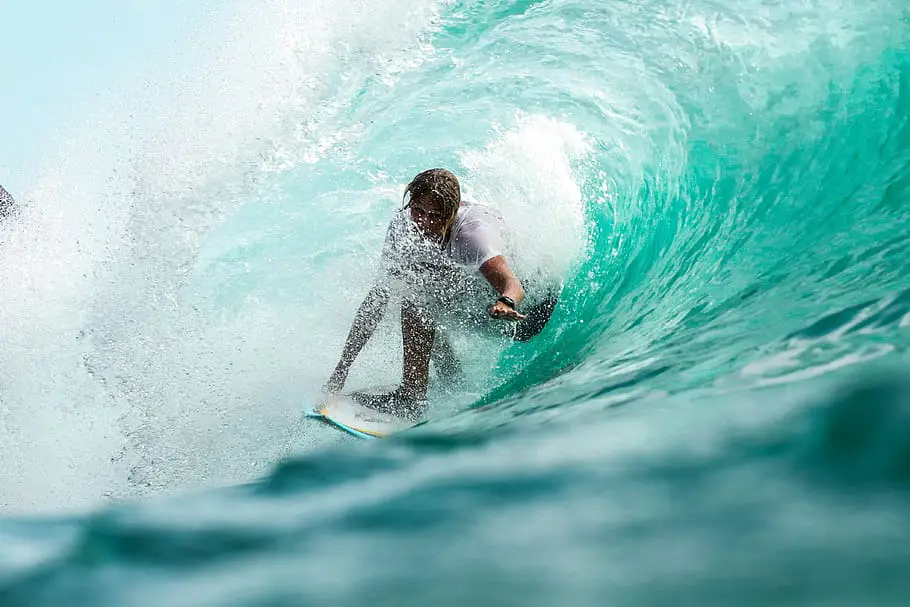
When surfers get covered up by a barrelling wave, we call it getting barrelled. Regarded as the ultimate feeling when it comes to surfing, with many wave riders dedicating their entire existence to getting barrelled. Other terms used instead of barrelled are are pitted, tubed, slotted or kegged.
20. Indo
You guessed it right, Indo refers to Indonesia. One of the best learn to surf destinations in the world. With a fantastic climate and epic waves for all skill levels. Plus a low cost of living and some great entertainment and dining options. Also the location of our Bali Cliff and Bali Padang surf camps.
21. Ragdolled
The next step up from wiping out is being ragdolled. By which you are swung around under that water by a powerful wave after falling off. It refers to the fact that you have no control over your limbs while you’re being washed around.
22. Whitewash
This surfing term refers to the broken section of a wave. Traditionally, this is what beginners paddle into when they are first starting as one can see there is less energy than the pocket of a wave.
23. Wettie
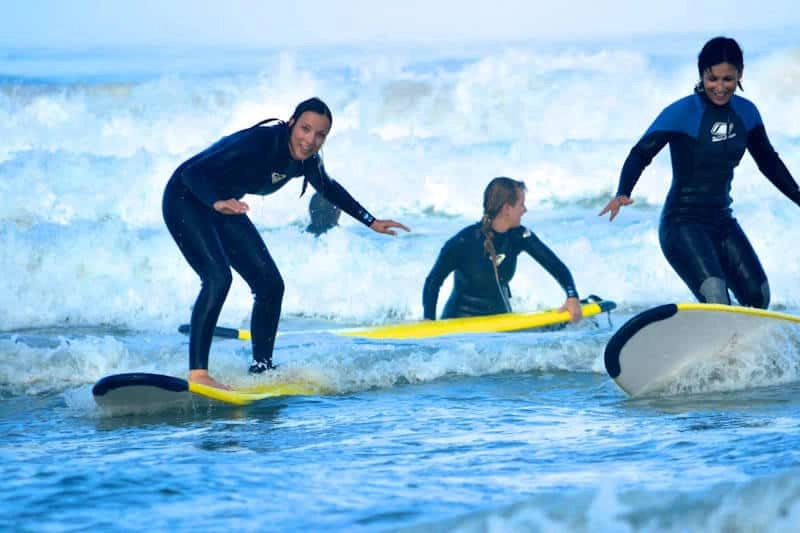
Surfers’ slang for a wetsuit, these are available in different thicknesses and different leg/arm length combinations. For surfing in frigid conditions or places with cold water such as Portugal.
24. Bommie
The slang term for a bombora, which is the Aboriginal name for a submerged rock or reef shelf located some distance from shore. Use it for when you want to speak like a surfer at an advanced level.
25. Backhand/Forehand

This surfing term is used when talking about whether you’re facing a wave or have your back to it while surfing. Goofy footers (right foot forward) for example would surf on their forehand when riding lefthanded waves.
26. Nica
Abbreviation of Nicaragua. One of three tropical destinations where Rapture has a surf camp.
27. Closeout
A closeout occurs when a wave breaks in one long line instead of peeling in sections. They are unrideable and offer no wall to surf on. Closeouts should be avoided if possible, as taking a closeout wave may result in injury.
28. Pura Vida
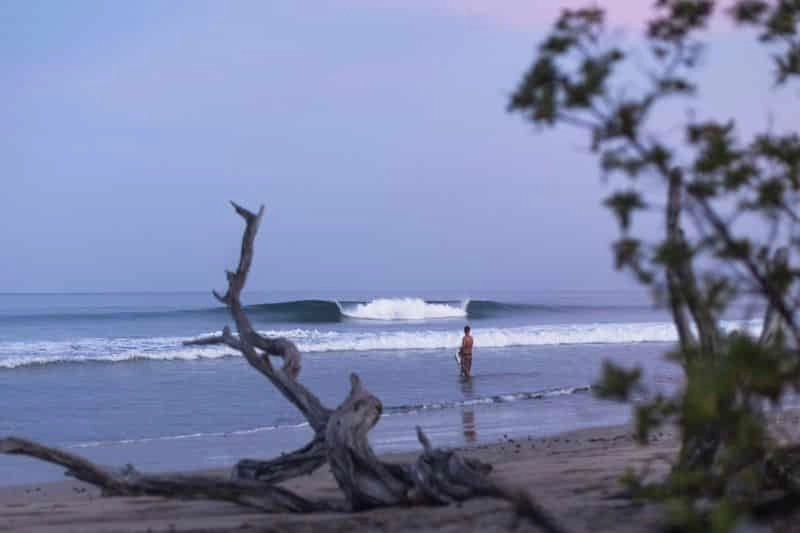
An important cultural lifestyle, Pura Vida is a concept in Costa Rican culture that’s become a way of life. It is hard to define, but locals believe it to be an attitude, an emotion and a feeling of contentment all rolled into one. If you really want to know what it is, you could always join our Costa Rica surf camp and experience it firsthand.
29. Quiver
Multiple boards form a quiver. With many professional surfers having quivers that contain hundreds of surfboards. Knowing what a quiver is can help you speak like a surfer if a conversation about surfboards ever arises.
30. Stoked

The feeling of being excited and happy to the point that you cannot contain yourself. Similar to being amped or hyped up. John John Florence’s favorite word and a cornerstone phrase if you want to speak like a surfer.
31. Mal/Malibu
No, this surfing term does not refer to a place but for a longboard. A mal is generally 9 – 11 foot long with great buoyancy and very forgiving rails. Their size and sturdiness make them the ideal board for beginner surfers to learn on. Available as soft tops and in timber, fiberglass and epoxy constructions.
32. Shoulder
The part of a wave beyond the pocket where there is less energy but more room for a lateral maneuver.
33. Drop-in
A surfing term referring to an act in which surfer B takes off on a wave while surfer A is already on it. Thereby blocking surfer A from completing the ride. Considered to be almost inexcusable in surf culture. It can be either accidental or intentional, but it’s always dangerous as it can lead to aggression in the water.
34. Surfer’s froth
That feeling every beginner surfer gets when they’re ready to take their skills to the next level. Can also be used as a verb e.g. “I’m frothing to try my new board at a Rapture surf camp in Bali“.
35. Boggings
This term is used when a surfer’s weight is too far back, and the surfboard nose lifts up;
36. Dawny
This refers to going for a surf session very early in the morning, usually at first light.
37. Off the hook
This term is used by surfers when the waves are performing extraordinarily well.
38. Swell period
The amount of time it takes for two successive wave crests to pass through a determined point. The quality of waves in a given location is largely dependent on the timing of sets coming in. For this reason the swell period, also known as wave interval, is critical surf knowledge because it ultimately measures the quality of the upcoming surf session.
39. No man’s land
An undesirable position for surfers trapped between the shoreline and a series of oncoming breaking waves that can make paddling back outside very difficult. In this situation the only thing that surfers can do is to wait for a delay between the larger breaking waves before they can attempt to slip back into clear water. Other terms used to describe this situation are Caught inside, White zone or Crash zone.
40. Double-up wave
A type of wave that you get when two separate waves merge into one. The energy developed from the combined waves creates a wave that is large and highly powerful. For this reason double-up wave, also known as a “Humpback”, is usually stronger and more dangerous than a regular one, and can be difficult to ride.
Book a meeting with us
We understand how important holidays are. We are offering free Phone Callbacks or online face to face meetings for you. Choose one of our available customer happiness agents below and start your Rapturecamps Journey.
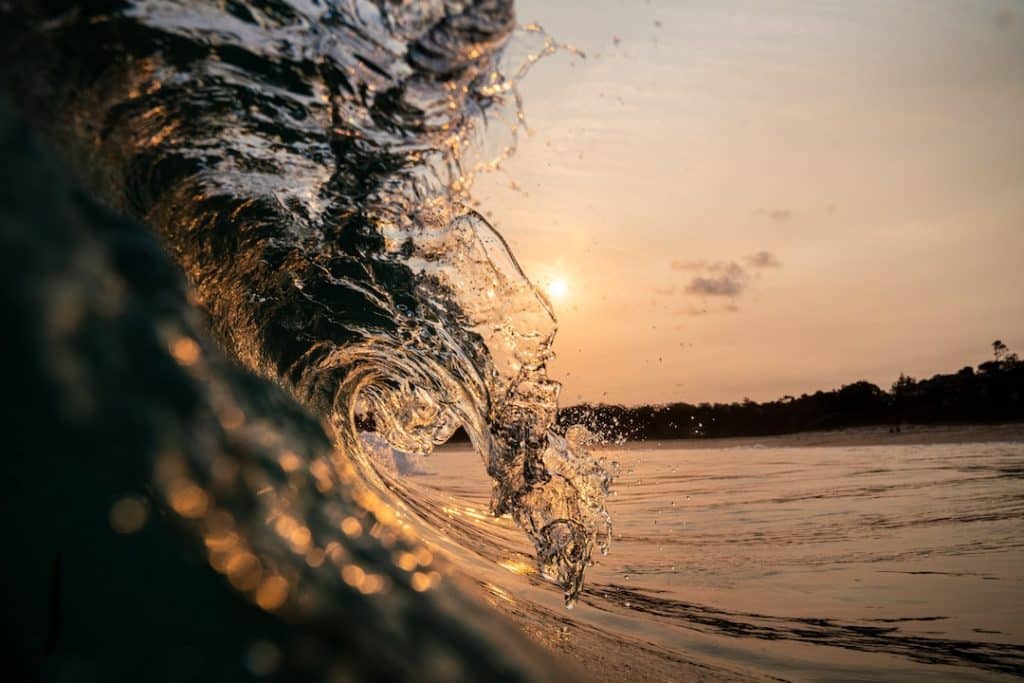
Ready for a surf trip? SURF LIKE A PRO
Take your skills to the next level with Rapturecamps
We provide excellent surf and Yoga vacations in Bali, Portugal, Nicaragua and Costa Rica. Catch your next wave with Rapturecamps!

